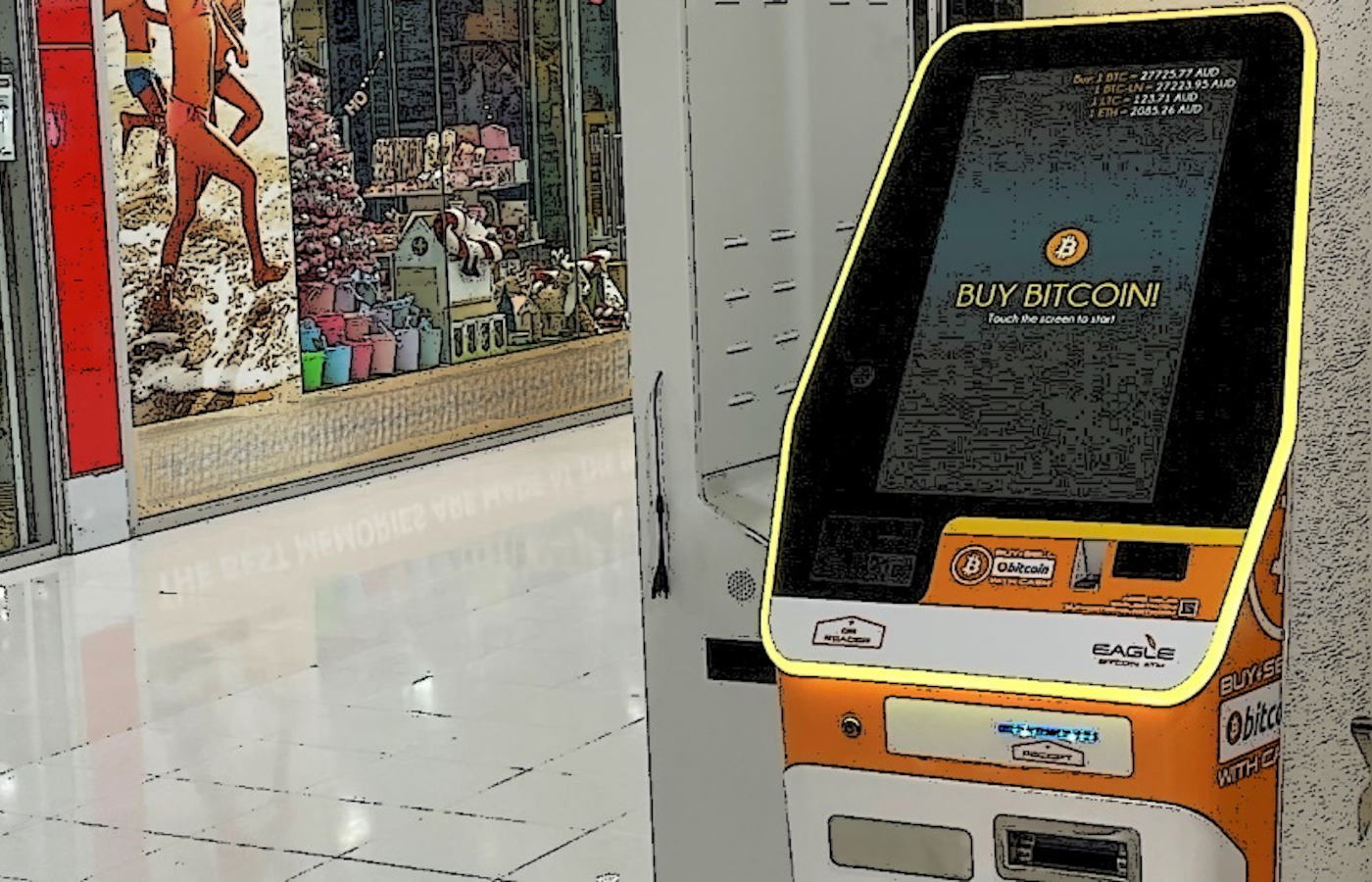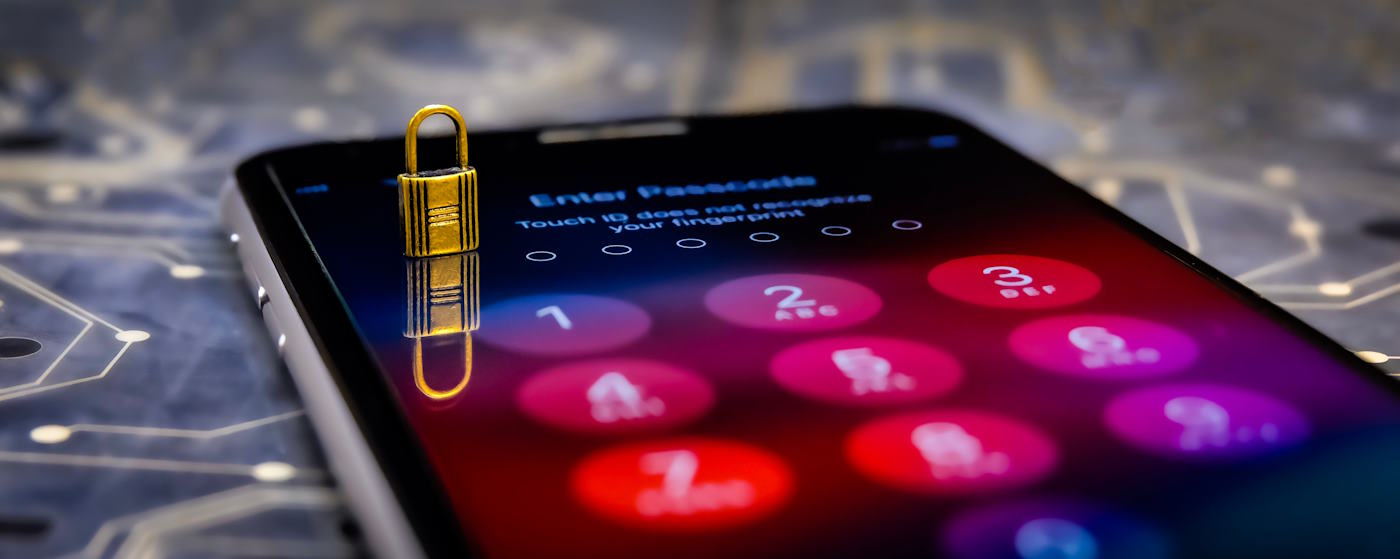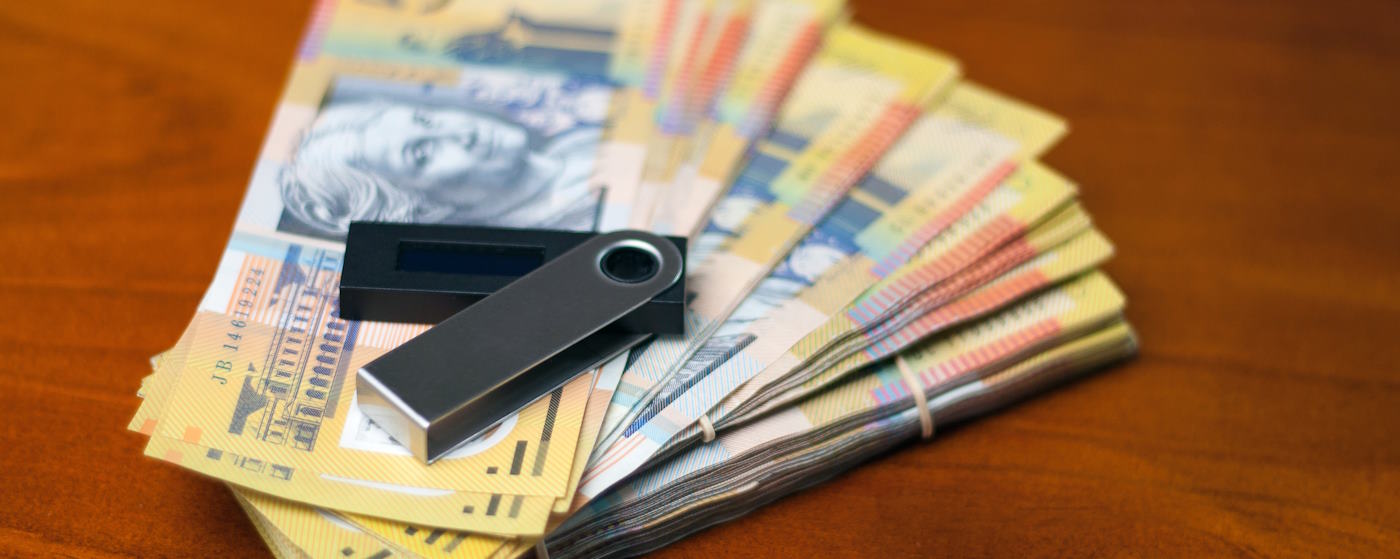Securing Your Bitcoin Investments: Best Practices for Using Bitcoin ATMs Safely

Introduction
The world of cryptocurrencies has witnessed a remarkable evolution in recent years, reshaping how we perceive and engage with financial transactions. One notable contributor to this transformation is the proliferation of Bitcoin ATMs, which have emerged as convenient gateways to the world of digital currencies. These specialized machines offer individuals the ability to buy and sell Bitcoin with relative ease, making it accessible even to those without advanced technical expertise. As the adoption of Bitcoin and other cryptocurrencies continues to expand, so does the demand for user-friendly solutions like Bitcoin ATMs, on the Gold Coast and beyond.
However, with the increasing adoption of digital currencies comes a critical responsibility: the need for enhanced security. The decentralized nature of cryptocurrencies offers numerous benefits, including reduced reliance on traditional financial intermediaries and greater control over personal finances. Yet, this very feature also introduces new security challenges that users must navigate effectively. The volatile and pseudonymous nature of cryptocurrencies, including Bitcoin, demands heightened caution when engaging in transactions, particularly through Bitcoin ATMs.
In this comprehensive guide, we'll delve into the intricacies of securing your Bitcoin investments when using Bitcoin ATMs. We'll walk you through the fundamental principles of Bitcoin ATMs, their functionalities, and why prioritizing security is essential in the realm of cryptocurrency transactions. Whether you're a seasoned cryptocurrency enthusiast or a curious newcomer, understanding the best practices for safeguarding your assets during Bitcoin ATM transactions is crucial. So, let's embark on a journey to empower you with the knowledge and tools needed to navigate the world of Bitcoin ATMs with confidence and security.
1. Understanding the Basics of Bitcoin ATMs:
Bitcoin ATMs, a modern innovation in the cryptocurrency landscape, provide individuals with a tangible link between the digital world of cryptocurrencies and the physical realm of cash transactions. These specialized machines allow users to buy or sell Bitcoin, transforming the way people engage with this decentralized digital currency.
How Bitcoin ATMs Work:
Bitcoin ATMs function similarly to traditional cash ATMs, but with a unique twist. Instead of dispensing physical currency, Bitcoin ATMs facilitate the conversion between Bitcoin and fiat currency (such as AUD, USD etc.). Users can insert cash into the machine, which then sends the equivalent amount of Bitcoin to the user's digital wallet. Conversely, users can also sell their Bitcoin at these ATMs, receiving cash in exchange.
Types of Bitcoin ATMs:
There are two primary types of Bitcoin ATMs: one-way and two-way machines.
One-Way Bitcoin ATMs:
One-way Bitcoin ATMs enable users to either purchase Bitcoin using cash or sell their Bitcoin to receive cash. These machines are simpler in design and often serve as an entry point for individuals looking to acquire their first cryptocurrency holdings.
Two-Way Bitcoin ATMs:
Two-way Bitcoin ATMs offer a more comprehensive experience. In addition to buying and selling Bitcoin, these machines also allow users to exchange Bitcoin for cash or vice versa. This advanced functionality provides users with greater flexibility and options for managing their cryptocurrency holdings.
Functionalities of Bitcoin ATMs:
Bitcoin ATMs offer several key functionalities:
- User Identification: Many Bitcoin ATMs require users to complete identity verification processes to comply with regulatory standards.
- QR Code Scanning: Users can scan their Bitcoin wallet QR code using the machine's scanner to initiate the transaction.
- Transaction Confirmation: After verifying the transaction details, the machine confirms the transaction and sends Bitcoin or dispenses cash accordingly.
- Receipt Generation: Bitcoin ATMs often provide transaction receipts, offering a tangible record of the transaction for users' reference.
2. The Importance of Security

As the popularity of cryptocurrencies, especially Bitcoin, continues to grow, so do the security challenges that users face in the digital realm. Bitcoin transactions offer a level of privacy and decentralization, but they also come with specific vulnerabilities that users need to be aware of and guard against.
Security Challenges Associated with Bitcoin Transactions
Bitcoin transactions are irreversible and pseudonymous, meaning that once a transaction is confirmed, it cannot be undone. This characteristic, while offering advantages, also presents challenges:
- Irreversibility: Unlike traditional banking transactions, once a Bitcoin transaction is confirmed, it cannot be reversed. This makes it crucial to verify transaction details before proceeding.
- Pseudonymity: Bitcoin transactions are linked to wallet addresses, which are alphanumeric strings rather than personal information. While this enhances privacy, it also means that transactions are challenging to trace back to individuals.
- Security Risks: Bitcoin wallets and private keys need to be securely stored. If a private key is lost or stolen, access to the associated Bitcoins is also lost.
Why Users Should Prioritize Security When Using Bitcoin ATMs
Bitcoin ATMs provide a bridge between the physical world and the digital realm of cryptocurrencies. While they offer convenience and accessibility, they also introduce security considerations:
- Cash Transactions: Using a Bitcoin ATM involves cash transactions, which can attract attention and potential risks. It's important to choose well-lit and secure locations when using these machines.
- Private Key Handling: During transactions, private keys are exchanged between the ATM and your wallet. Safeguarding these keys is paramount to prevent unauthorized access to your funds.
- Transaction Confirmations: Confirming transactions on a Bitcoin ATM requires careful attention to details. Any mistakes can result in irreversible transactions.
As the world of digital finance evolves, staying informed and proactive about security measures is vital for anyone involved in Bitcoin transactions. In the next section, we'll explore the best practices that users should adopt to ensure the security of their Bitcoin investments.
3. Best Practices for Secure Bitcoin ATM Usage
Using a Bitcoin ATM can be a convenient way to buy or sell Bitcoin, but safeguarding your assets requires a few important steps. By following these best practices, you can ensure that your Bitcoin transactions are secure and hassle-free.
Finding a Reputable Bitcoin ATM Location
Before using a Bitcoin ATM, take the time to find a reputable and well-maintained location. Look for Bitcoin ATMs located in secure and well-trafficked areas. Avoid using machines in dimly lit or isolated places.
Preparing Your Wallet and QR Code
Make sure you have a secure and backed-up Bitcoin wallet before heading to the ATM. Ensure your wallet is funded with the necessary amount for the transaction if you are cashing out, or have your wallet's QR code ready for scanning if you are buying, as this will facilitate a smooth transaction process.
Executing the Transaction Securely
When you're at the Bitcoin ATM, follow these steps to execute your transaction securely:
- Choose the appropriate transaction option (buy or sell) on the ATM's interface.
- Scan your wallet's QR code to provide the destination address for the transaction.
- Verify the transaction details on the ATM screen, including the amount and destination address.
- Insert the necessary amount of cash into the ATM.
- Double-check the transaction details on the screen to ensure accuracy.
- Confirm the transaction on the ATM.
Safely Storing Your Receipt
Once the transaction is complete, the ATM will provide you with a receipt. This receipt serves as proof of the transaction and should be kept in a safe place. Store it alongside your other important financial documents for future reference.
By adhering to these best practices, you can minimize the risks associated with Bitcoin ATM transactions and ensure a secure experience. In the next section, we'll delve into the common scams and pitfalls that users should be aware of when using Bitcoin ATMs.
4. Avoiding Common Scams and Pitfalls
While Bitcoin ATMs provide a convenient way to engage with cryptocurrencies, they also attract the attention of scammers and fraudsters. Staying vigilant and informed about common scams can help you avoid falling victim to these pitfalls.
Identifying Common Scams
Several common scams are associated with Bitcoin ATMs:
- Phishing Attempts: Scammers may set up fake Bitcoin ATM websites or send phishing emails to trick users into divulging their private keys or wallet information.
- Fake Support: Fraudsters might impersonate customer support representatives and ask for personal information or access to your wallet under the guise of providing assistance.
- Fraudulent QR Codes: Scammers can replace legitimate QR codes with their own, diverting funds to their wallets instead.
Tips to Recognize and Avoid Scams
Protect yourself from scams by following these guidelines:
- Verify Website URLs: Ensure you are on the official website of the Bitcoin ATM provider before entering any sensitive information.
- Double-Check Support Communications: Independently verify support communications using contact information from the official website.
- Inspect QR Codes: Before scanning a QR code, visually inspect it to ensure it matches the information you expect.
- Use Secure Wi-Fi: Avoid using public Wi-Fi networks when engaging in sensitive transactions to prevent interception.
- Trustworthy Locations: Only use Bitcoin ATMs located in reputable and secure places to reduce the risk of encountering fraudulent machines.
By staying informed and cautious, you can navigate the world of Bitcoin ATMs with confidence and minimize the risks of falling prey to scams. In the next section, we'll guide you through the process of choosing the right Bitcoin wallet to enhance your security.
5. Choosing the Right Bitcoin Wallet

When it comes to securing your Bitcoin holdings, choosing the right wallet is paramount. Bitcoin wallets come in various types, each with its own set of security features and benefits. Understanding these options will help you make an informed decision that aligns with your needs and preferences.
Different Types of Bitcoin Wallets and Their Security Features
Bitcoin wallets can be broadly categorized into the following types:
- Hardware Wallets: Hardware wallets are physical devices that store your private keys offline, making them highly secure against online threats.
- Software Wallets: Software wallets are applications that you install on your computer or mobile device. They offer a balance between security and accessibility.
- Mobile Wallets: Mobile wallets are apps designed for smartphones, providing the convenience of accessing your Bitcoin on the go.
Each wallet type offers a range of security features, such as encryption, two-factor authentication (2FA), and multi-signature support. It's important to assess your security priorities and level of expertise when choosing a wallet.
Guidance for Selecting a Secure Wallet
Consider the following factors when selecting a Bitcoin wallet:
- Security Features: Prioritize wallets with strong security measures, such as end-to-end encryption and support for 2FA.
- User-Friendly Interface: Choose a wallet that you find easy to use and navigate.
- Backup and Recovery: Opt for wallets that provide clear instructions for backing up and recovering your wallet in case of device loss or failure.
- Community Reputation: Research user reviews and feedback to gauge the wallet's reputation within the cryptocurrency community.
- Development Team: Trustworthy wallets have active and reputable development teams that regularly update and maintain the wallet's security features.
Remember that your choice of wallet will directly impact the security of your Bitcoin holdings. Take the time to research and select a wallet that meets your security requirements while aligning with your usage preferences. In the next section, we'll explore strategies for ensuring network and connection security when using Bitcoin ATMs.
6. Ensuring Network and Connection Security
When engaging in Bitcoin transactions, ensuring the security of your network connections is crucial. The decentralized nature of cryptocurrencies is designed to provide financial sovereignty, but it also requires users to take responsibility for their own security.
The Importance of Secure Network Connections
Secure network connections are essential to safeguarding your Bitcoin transactions from potential threats. Unsecured networks can expose you to various risks, including eavesdropping, data interception, and unauthorized access to your private information.
Tips for Using Public Wi-Fi Safely
Using public Wi-Fi networks while conducting Bitcoin transactions can be risky. Follow these tips to enhance your security:
- Use Secure Websites: Ensure the website you're using for Bitcoin transactions employs HTTPS encryption.
- Avoid Public Networks: If possible, refrain from using public Wi-Fi networks for sensitive transactions.
- Use Mobile Data: If you must conduct a transaction on the go, consider using your mobile data connection instead of public Wi-Fi.
Using VPNs for Added Security
Virtual Private Networks (VPNs) can add an extra layer of security to your internet connection by encrypting your data and masking your IP address. When using a VPN:
- Choose a Reliable VPN Provider: Select a reputable VPN service known for its security features.
- Connect to Trusted Servers: Use VPN servers from trusted locations to avoid potential privacy and security risks.
- Enable Kill Switch: If your VPN offers a kill switch, enable it to ensure that your internet connection is cut off if the VPN connection drops.
By prioritizing secure network connections and adhering to these best practices, you can minimize the risks associated with conducting Bitcoin transactions over the internet. In the next section, we'll explore the importance of Two-Factor Authentication (2FA) in enhancing your overall security.
7. Two-Factor Authentication (2FA) for Added Security
Two-Factor Authentication (2FA) is a powerful security tool that adds an extra layer of protection to your Bitcoin wallet and exchange accounts. It significantly enhances your account's security by requiring two distinct forms of verification before granting access.
The Concept of 2FA and Its Benefits
Two-Factor Authentication involves two steps of authentication:
- Something you know (like a password).
- Something you have (like a smartphone or security token).
Benefits of using 2FA include:
- Enhanced Security: Even if your password is compromised, an additional verification step is needed to access your account.
- Protection Against Unauthorized Access: 2FA prevents unauthorized individuals from accessing your account, even if they have your password.
- Defense Against Phishing: Even if you accidentally fall for a phishing scam, the attacker won't be able to access your account without the second factor.
Setting Up 2FA for Bitcoin Wallet and Exchange Accounts
Follow these steps to set up 2FA:
- Log in to your Bitcoin wallet or exchange account.
- Navigate to the security settings or account settings.
- Choose the option to enable Two-Factor Authentication.
- Scan the provided QR code with a 2FA app (like Google Authenticator or Authy).
- Enter the verification code generated by the app.
- Save the backup codes provided by the platform in a secure location.
By setting up 2FA, you significantly strengthen the security of your Bitcoin-related accounts.
8. Physical Security Precautions

When using a Bitcoin ATM, your physical safety is just as important as your digital security. Following physical security precautions can help ensure that your Bitcoin transactions are conducted in a safe environment.
Protecting Your Physical Safety at Bitcoin ATM Locations
Consider the following tips to safeguard your physical safety:
- Choose Well-Lit and Public Locations: When using a Bitcoin ATM, opt for locations that are well-lit and have a reasonable level of foot traffic. This is especially important if you're conducting transactions at night.
- Avoid Isolated Areas: Avoid Bitcoin ATMs located in isolated areas or places with limited visibility.
- Be Aware of Your Surroundings: Stay alert and aware of your surroundings while using the ATM. If you feel uncomfortable or notice anything suspicious, it's better to leave and find another location.
- Bring a Friend: If possible, bring a friend along when using a Bitcoin ATM, particularly if the location is unfamiliar.
- Conceal Transactions: Shield your screen and keypad from prying eyes while entering your information to ensure privacy.
By prioritizing physical security and following these precautions, you can significantly reduce the risk of encountering physical threats while using Bitcoin ATMs. In the next section of this guide, we'll cover the importance of keeping your software updated.
9. Keeping Up with Security Updates
Maintaining the security of your Bitcoin transactions requires ongoing vigilance and awareness. Staying up-to-date with software and application updates is a crucial aspect of maintaining a secure digital presence.
The Significance of Regular Software Updates
Regularly updating your software and applications is essential for several reasons:
- Security Patches: Updates often include security patches that address vulnerabilities and weaknesses discovered in previous versions.
- Protection Against Exploits: Hackers frequently exploit outdated software to gain unauthorized access to devices and systems. Keeping software updated helps prevent these exploits.
- Improved Features: Updates often include new features and enhancements that can enhance your overall experience.
Preventing Vulnerabilities with Security Updates
Staying informed about security updates and promptly applying them can help prevent potential vulnerabilities in your digital environment:
- Enable Automatic Updates: Whenever possible, enable automatic updates for your operating system, applications, and security software.
- Regularly Check for Updates: Manually check for updates on a regular basis, especially for critical software and security tools.
- Stay Informed: Follow reputable sources for tech news and security updates to stay informed about the latest developments.
By consistently updating your software and staying informed about security updates, you contribute to the overall protection of your digital assets, including your Bitcoin holdings.
10. Resources for Learning More
Continuing your education about Bitcoin security is a proactive step towards enhancing your digital safety. Here are some reputable online resources where you can learn more:
Online Learning Platforms
Bitcoin Security Guides
News and Updates
These resources offer valuable insights into Bitcoin security best practices, news, and educational content. By exploring these sources, you'll be better equipped to make informed decisions and stay secure in the evolving landscape of cryptocurrencies.
Conclusion
Congratulations! You've completed this comprehensive guide to secure Bitcoin ATM usage. As you venture into the world of cryptocurrencies, it's essential to prioritize security at every step of your journey. Here's a quick summary of the key takeaways:
Key Takeaways
- Understand how Bitcoin ATMs work and the different types available.
- Embrace the importance of security and learn about the challenges associated with Bitcoin transactions.
- Follow best practices for using Bitcoin ATMs, including finding reputable locations and executing transactions securely.
- Avoid common scams and pitfalls by recognizing phishing attempts and fraudulent ATMs.
- Choose the right Bitcoin wallet that aligns with your security preferences.
- Ensure network and connection security by using secure networks and VPNs.
- Implement Two-Factor Authentication (2FA) for added account protection.
- Prioritize your physical safety by selecting secure ATM locations and staying vigilant.
- Stay informed by keeping up with security updates for your software and applications.
- Access reputable online resources to continue learning about Bitcoin security.
Your Security, Your Responsibility
Remember, in the world of cryptocurrencies, your security is in your hands. By following the best practices outlined in this guide, you can significantly reduce the risks associated with using Bitcoin ATMs and engaging in digital finance. Prioritize your security, stay informed, and approach each transaction with caution.
Thank you for taking the time to enhance your knowledge and understanding of secure Bitcoin ATM usage. We wish you safe and successful experiences in your cryptocurrency journey!

Eagle Bitcoin ATM is your gateway to the world of cryptocurrencies, conveniently located right at your fingertips.

